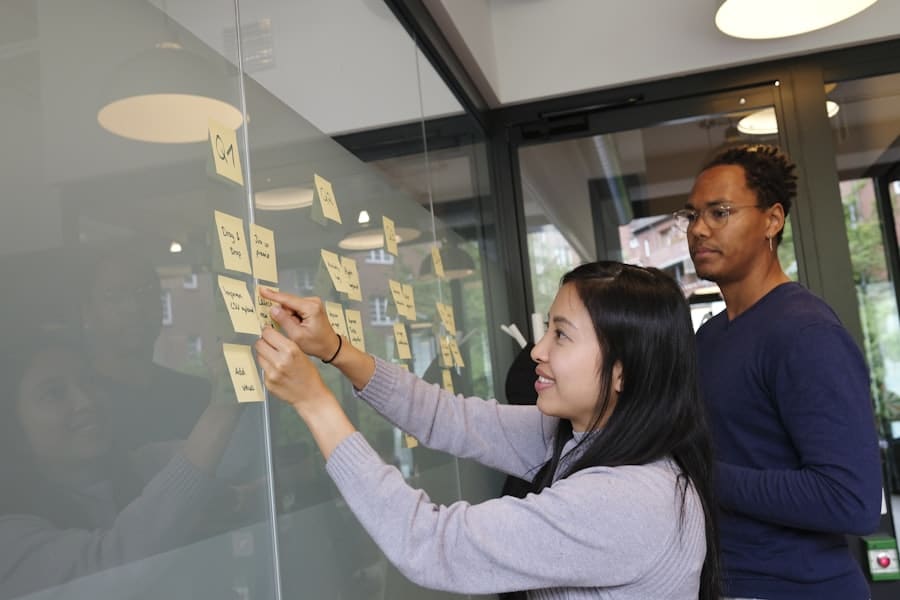Emerging technologies are reshaping the educational landscape, particularly in the realm of personalized learning systems. These systems are designed to tailor educational experiences to individual learners’ needs, preferences, and abilities, moving away from the traditional one-size-fits-all approach. The integration of technologies such as artificial intelligence (AI), virtual reality (VR), augmented reality (AR), and machine learning is revolutionizing how educators deliver content and how students engage with it.
As these technologies evolve, they provide unprecedented opportunities for customization and engagement, allowing learners to progress at their own pace and style. The impact of these technologies is multifaceted. For instance, personalized learning systems can now analyze vast amounts of data to identify learning patterns and preferences, enabling educators to create more effective instructional strategies.
This data-driven approach not only enhances the learning experience but also empowers educators to make informed decisions about curriculum design and resource allocation. Furthermore, the accessibility of these technologies means that personalized learning can reach a broader audience, including students with diverse learning needs and backgrounds. As a result, the educational experience becomes more inclusive, fostering an environment where every learner has the opportunity to succeed.
Key Takeaways
- Emerging technologies are transforming personalized learning by tailoring educational experiences to individual needs.
- Artificial intelligence enhances personalized learning through intelligent content delivery and real-time feedback.
- Virtual and augmented reality create immersive, interactive learning environments that boost engagement.
- Machine learning and big data enable adaptive learning platforms to continuously refine and optimize learning paths.
- The future of personalized learning systems lies in integrating these technologies to provide more effective and customized education.
Utilizing Artificial Intelligence for Personalized Learning
Artificial intelligence plays a pivotal role in the development of personalized learning systems by providing tools that can adapt to individual student needs in real-time. AI algorithms can analyze a learner’s interactions with educational content, assessing their strengths and weaknesses to deliver tailored recommendations. For example, platforms like DreamBox Learning utilize AI to adjust math lessons based on a student’s performance, ensuring that they are neither bored with material that is too easy nor overwhelmed by content that is too challenging.
This dynamic adjustment helps maintain student engagement and promotes mastery of concepts. Moreover, AI can facilitate personalized feedback, which is crucial for effective learning. Traditional assessment methods often provide limited insights into a student’s understanding of a subject.
In contrast, AI-driven systems can offer immediate feedback on assignments and quizzes, highlighting areas for improvement and suggesting additional resources or exercises tailored to the learner’s specific needs. This immediate response not only aids in retention but also encourages a growth mindset, as students can see their progress in real-time and adjust their study habits accordingly.
The Role of Virtual Reality in Personalized Learning

Virtual reality is transforming personalized learning by immersing students in interactive environments that enhance engagement and understanding. Through VR, learners can explore complex concepts in a three-dimensional space, making abstract ideas more tangible. For instance, a biology student can take a virtual field trip inside the human body, observing cellular processes up close.
Additionally, VR can be customized to meet individual learner needs. Educators can design specific scenarios that align with a student’s interests or career aspirations, making the learning experience more relevant and motivating.
For example, a student interested in architecture could engage in a VR simulation that allows them to design buildings while learning about structural engineering principles. Such tailored experiences not only enhance knowledge retention but also foster critical thinking and problem-solving skills as students navigate real-world challenges within a safe virtual environment.
Augmented Reality and Personalized Learning Experiences
Augmented reality complements personalized learning by overlaying digital information onto the physical world, creating interactive experiences that enhance understanding and retention. AR applications can provide contextual information about real-world objects, allowing students to engage with content in a more meaningful way. For instance, an AR app might enable students studying history to point their devices at historical landmarks and receive detailed information about their significance, including multimedia elements like videos or 3D models.
The adaptability of AR technology allows educators to tailor experiences based on individual student needs and interests. For example, in a science class, students could use AR to visualize chemical reactions or biological processes in real-time, adjusting the complexity of the information presented based on their current understanding. This level of customization not only makes learning more engaging but also encourages exploration and inquiry, as students can interact with content at their own pace and delve deeper into topics that intrigue them.
Incorporating Machine Learning in Personalized Learning Systems
Machine learning is a subset of artificial intelligence that focuses on developing algorithms that allow systems to learn from data and improve over time without explicit programming. In personalized learning systems, machine learning algorithms analyze student data to identify patterns and predict future performance. This capability enables educators to intervene proactively when a student is struggling or to challenge those who are excelling.
Furthermore, machine learning can enhance the assessment process by providing insights into student progress over time. Traditional assessments often fail to capture the nuances of a student’s learning journey; however, machine learning algorithms can track performance across various metrics, offering a comprehensive view of a learner’s strengths and areas for improvement.
This data-driven approach allows educators to tailor instruction more effectively and provides students with personalized pathways that align with their unique learning trajectories.
The Potential of Adaptive Learning Platforms

Adaptive learning platforms represent a significant advancement in personalized education by utilizing technology to create customized learning experiences that respond dynamically to individual student needs. These platforms assess learners’ knowledge levels and adapt content delivery accordingly, ensuring that each student receives instruction tailored to their current understanding. For example, platforms like Smart Sparrow allow educators to design adaptive lessons that adjust based on student responses, providing additional support or advanced challenges as needed.
The potential of adaptive learning extends beyond mere content delivery; it also encompasses the ability to foster self-directed learning skills among students. By allowing learners to take control of their educational journeys—choosing when to advance or revisit material—adaptive platforms encourage autonomy and responsibility in the learning process. This shift not only enhances engagement but also prepares students for lifelong learning by instilling habits of self-assessment and reflection.
Harnessing Big Data for Personalized Learning
Big data plays an essential role in enhancing personalized learning systems by providing insights derived from vast amounts of information collected from various sources. Educational institutions can leverage big data analytics to understand trends in student performance, engagement levels, and even social-emotional factors that influence learning outcomes. By analyzing this data, educators can identify at-risk students early on and implement targeted interventions before issues escalate.
Moreover, big data enables continuous improvement in educational practices by allowing institutions to evaluate the effectiveness of different teaching strategies and curricular approaches. For instance, by analyzing data from multiple cohorts over several years, schools can determine which instructional methods yield the best results for specific demographics or subjects. This evidence-based approach not only enhances the quality of education but also ensures that resources are allocated efficiently to maximize student success.
The Future of Personalized Learning Systems with Emerging Technologies
As emerging technologies continue to evolve, the future of personalized learning systems looks promising and transformative. The integration of AI, VR, AR, machine learning, and big data will likely lead to increasingly sophisticated educational environments where personalization becomes the norm rather than the exception. Future systems may incorporate even more advanced analytics capabilities, allowing for real-time adjustments based on a learner’s emotional state or cognitive load—factors that significantly impact engagement and retention.
Additionally, as technology becomes more accessible globally, personalized learning systems will have the potential to reach underserved populations who may have previously lacked access to quality education. Innovations such as mobile learning applications and low-cost VR headsets could democratize education further, providing tailored experiences regardless of geographical or socio-economic barriers. Ultimately, the convergence of these technologies will create an educational landscape where every learner has the opportunity to thrive in an environment designed specifically for them.
In the context of how emerging technologies are shaping personalized learning systems, it’s interesting to explore the various tools that can enhance educational experiences. For instance, the article on how to choose a tablet for students provides valuable insights into selecting the right devices that can support personalized learning initiatives. By integrating the right technology, educators can tailor their teaching methods to meet the unique needs of each student, ultimately fostering a more effective learning environment.
FAQs
What is personalized learning?
Personalized learning is an educational approach that tailors instruction, content, and learning experiences to meet the individual needs, skills, and interests of each student.
How does emerging technology enhance personalized learning systems?
Emerging technologies such as artificial intelligence, machine learning, data analytics, and adaptive software enable personalized learning systems to analyze student performance in real-time and adjust content and pacing accordingly.
What are some examples of emerging technologies used in personalized learning?
Examples include AI-powered tutoring systems, virtual and augmented reality for immersive learning, learning management systems with adaptive algorithms, and data analytics platforms that track student progress.
What benefits do personalized learning systems offer to students?
They provide customized learning paths, improve engagement, accommodate different learning styles, allow for self-paced learning, and help identify and address knowledge gaps more effectively.
Are personalized learning systems suitable for all educational levels?
Yes, personalized learning systems can be adapted for use in K-12 education, higher education, and professional training environments.
What challenges exist in implementing personalized learning systems?
Challenges include ensuring data privacy and security, addressing the digital divide, integrating technology with existing curricula, and providing adequate training for educators.
How do personalized learning systems use data?
They collect and analyze data on student interactions, performance, and preferences to create tailored learning experiences and provide feedback to both students and educators.
Can personalized learning systems replace traditional teaching methods?
Personalized learning systems are designed to complement, not replace, traditional teaching by providing additional tools and insights to support educators and enhance student learning.
What role do educators play in personalized learning environments?
Educators guide, facilitate, and support students, interpret data insights, and customize learning experiences while leveraging technology to meet individual student needs.
Is personalized learning effective in improving student outcomes?
Research indicates that personalized learning can improve student engagement, motivation, and academic achievement when implemented effectively with appropriate technology and instructional support.

